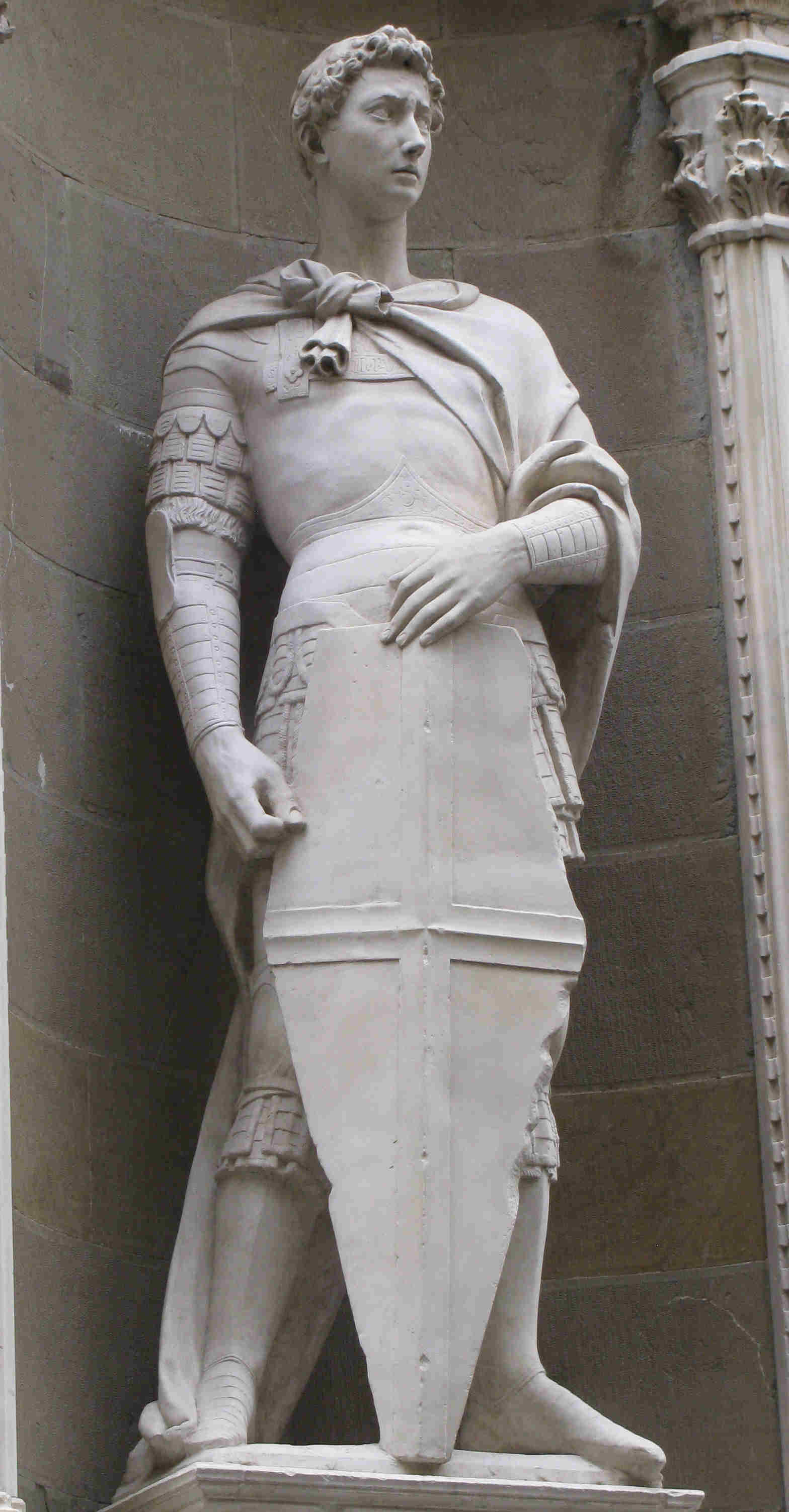
The Florence Baptistery.

The campanile of the Florence Duomo
The bell tower of the Cathedral.

Prophets - Donatello
Made for the niches on the bell tower of the Florence Duomo. The Beardless Prophet, as he is known, on the left, is said to be a portrait of Donatello's friend, the architect Filippo Brunelleschi.

Orsanmichele
The church of Orsanmichele used to be the city grain market, which once had open walls between the stone pillars which support the roof and second floor. These pillars contain niches, which hold the patron saints of the guilds that helped to fund the structure's construction.

Italian Gothic sculpture.
These two statues, made in 1330 and 1380, are typical of the craftsmanship and style of Italian Gothic sculpture. Made for the facade of the Florence Duomo, Santa Maria del Fiore.

John The evangelist - Donatello
Made for the facade of the Duomo (since removed) when Donatello was in his early 20's. It largely follows the style of the Late Gothic and of the work of other Florentine sculptors of the time.

St. George - Donatello
Made for the Armorer's Guild for Orsanmichele. It was finished less than a decade after his St. John, this work represents the shift from the Gothic to the styles of the early Renaissance.

St. George - Donatello
A detail of the sculpture. Note the expression; This is one of the first statues to represent the emotional state of its subject, something we take for granted in figurative sculpture today.

David - Michelangelo
Michelangelo gave his David the same psychologically intense gaze as Donatello's St. George.

St. George Relief - Donatello
The relief below the St. George is the earliest example we have of stiacciato relief. convincing shadow patterns around the belly of the horse and the mouth of the cave, combined with the use of one point perspective in the architecture of the work (another first!) give the illusion of a much greater depth than this one centimeter relief actually contains.

I Quattro Coronati - Nanni Di Banco
The Four Crowned Saints, as they are known; sculptors and martyrs. not the typical blank expressions which characterize much of Gothic sculpture. This work is much more famous for its charming relief of sculptors and masons at work, below the statue.

Habbakuk - Donatello
(Submitted by listener Lou! Thanks!) this rather formidable fellow is one of Donatello's prophets from the Campanile. Donatello was very proud of its stark realism and it was said that when Donatello swore an oath, he would 'swear by my Habbakuk'. It quicky became known to the Florentines as Lo Zuccone - The Pumpkinhead.

David -Donatello
So much to say about this masterpiece - the David will get its own podcast someday. The David is the first freestanding large statue of the renaissance, designed to be seen in the round, and as a complete work unto itself, not part of a larger architectural scheme. It also has no stylistic precedent; we can assume Donatello worked closely wirth a nude model rather than relying on convention or formulas from the antique. It's simple naturalism was an inspiration to many sculptors working in the 19th century who sought to escape the conventions of Neoclassicism.

Penitent Magdalene - Donatello
(submitted by listener Lou! Thanks!) Made of wood, stucco, and gilding, this work is a deeply moving piece when confronted in person. A sculpture made to evoke emotion; one of the earliest (and most powerful) works of expressionism in sculpture I know of.













